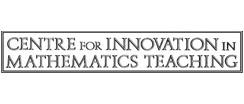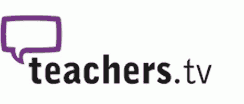Probability
This list supports the following learning objectives:
Know that if the probability of an event occurring is p then the probability of it not occurring is 1 − p; use diagrams and tables to record in a systematic way all possible mutually exclusive outcomes for single events and for two successive events.
Compare estimated experimental probabilities with theoretical probabilities, recognising that:
• if an experiment is repeated the outcome may, and usually will, be different
• increasing the number of times an experiment is repeated generally leads to better estimates of probability.
Compare experimental and theoretical probabilities in a range of contexts; appreciate the difference between mathematical explanation and experimental evidence.
- ALL
- Teacher guidance
- Textbook
- Video
- Activity sheet
Teacher guidance
Probability
Designed to improve confidence in mathematics, these resources focus on probability and were developed particularly for primary teachers and those non-specialists who teach mathematics in the lower secondary years.
Probability part A - Probabilities ? Simple Probability ? Outcome of Two Events ? Finding Probabilities Using Relative Frequency ? Determining Probabilities ? Probability of Two Events ? Use of Tree Diagrams ? Multiplication for Independent Events ? Mutually Exclusive Events.
Probability part B - Misconceptions ? Evens and Odds ? Experimental Probability ? Tossing Three Coins ? Throwing Two Dice ? A Russian Fable ? Open and Shut Case ? Fruit Machines ? Birthdays.
Textbook
Probability
Probability covers: the probability scale, the probability of a single event, the probability of two events, tree diagrams, theoretical and experimental probabilities.
The initial file forms part of the textbook. The activities sheet, extra exercises and mental tests compliment the work covered in the textbook. The overhead slides can be used on an interactive whiteboard.
Video
Probability
This video from Teachers TV observes mathematics teacher Jonny Heeley as he delivers an interactive lesson to a group of gifted and talented Year Ten students and demonstrates some inspiring ways of teaching probability.
Using a variety of games and challenges to excite and entertain his students, the probability for both dependent and independent events are explored and discussed.
Lucky Numbers
This is a Teachers’ TV programme from the series Painting with Numbers. In this episode Professor Marcus du Sautoy combines visual demonstrations with his unique gift for explanation to reveal the many benefits of understanding mathematics.
He looks at the numbers behind calculating risk by analysing probability. Beginning by looking at simple probabilities he moves on to explain how people picking numbers at random may not turn out to be as random as they think. The episode includes a good explanation of the Monty Hall problem before investigating how advertisers use statistics to sell us their products. Marcus concludes by showing how miss-interpreting probabilities in the courtroom can mean the difference between freedom and lifetime imprisonment and explores the bizarre nature of causation and demonstrates how, though two events might be linked, one does not necessarily cause the other.
Shopping Mall
Probability: Assorted Chocolates
Students are given the number of different types of chocolate in a bag and asked to identify the probability of a single event and combining two events.
Probability
This video from Teachers TV observes mathematics teacher Jonny Heeley as he delivers an interactive lesson to a group of gifted and talented Year Ten students and demonstrates some inspiring ways of teaching probability.
Using a variety of games and challenges to excite and entertain his students, the probability for both dependent and independent events are explored and discussed.
Activity sheet
Probability
This resource contains seventeen instant maths ideas beginning by exploring probability scales and simple probability. Students are asked to invent a fair game, to conduct an experiment using two dice and to discuss a number of statements relating to probability.
Further suggestions include experimenting with three dice, Buffon’s needle and the Monty Hall problem.
Student resources include using a number grid to help calculate different probabilities, the paving slabs investigation and blanks for drawing tree diagrams. A summary sheet explains many aspects of probability including combined events, mutually exclusive events, conditional probability and independent events.
Probability
SMILE resource.
Probability pack one contains twelve work cards with a wide variety of activities covering the use of vocabulary associated with probability, using probability to predict the outcome of an event, conducting experiments to explore different outcomes of an event, using simple tree diagrams to list all possible outcomes of an event, deciding whether an event is fair, and finding the chances of a particular outcome.
Probability pack two contains seven work cards with activities requiring students to use more complex tree diagrams to list all possible outcomes of an event and perform experiments to investigate the frequency of outcomes of the sum of two dice when they are thrown.
Probability pack three contains eleven work cards with activities in which students perform pinball experiments, use probability to test hypothesise, calculate simple probabilities, and explore combined probabilities.
Pascal’s triangle contains five activities: Sorting yard, Flipping coins, Coin game, Probability maze, Three men in a boat
Taking a Risk
This resource is designed to use and apply the uncertain and difficult nature of probability calculations in the real world through the work of an actuarial trainee. Students are provided with data on sea piracy, and use this to calculate the annual cost of piracy to the shipping industry, the probability of piracy for a particular company, and recommend to an insurance company the annual premium they should charge the company as protection from losses incurred due to piracy.






